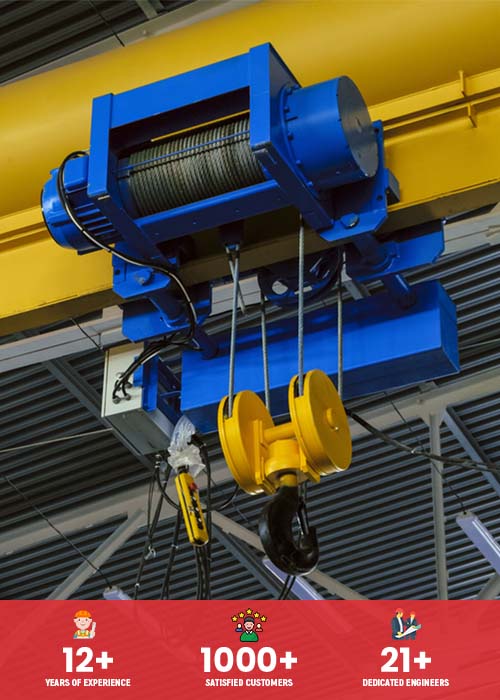Crane Collision Avoidance Systems- How It Reduces Accidents and Maintenance Costs?
Systems to prevent collisions between cranes and objects are entirely electronic. These tools are designed to reduce the likelihood of accidents. It also safeguards the crane, the building, and the people. Its primary use is in overhead material handling. If you work with numerous cranes on a single runway, it’s one of the most important systems. Additionally, you must employ it if only one crane is being used. You need to know about the eot crane manufacturer in ahmedabad who have all kinds of solutions that can prevent crane crashes. It will stop everything, whether it is crane-to-crane or crane-to-end. It improves the operator’s general sense of security. It will thereby lessen the need for system maintenance.
Requirements and standards of the system
For the jib crane manufacturers in ahmedabad, design is primarily necessary to avoid unintentional collisions with cranes and other machinery. There are no such criteria for general-purpose cranes. But according to CMAA, the buyer or owner must establish the standards for collision avoidance. The inadvertent collision of the cranes must be avoided by the end-of-travel collision avoidance design. Additionally, the trolley must be free of any mechanical end stops or other gadgets. Before the collision, the system must also halt the motion or reduce its speed.
Importance of collision avoidance system
It is one of the key requirements among businesses that a crucial system is employed that can raise an organization’s level of worker safety. This system will take action whenever there is a chance that an accident will occur as a result of collisions. Additionally, they are an excellent tool for helping you avoid human errors. You won’t have to worry about maintenance expenses as a result, and the workplace will be safer.
Features of a collision-avoidance system
- Forward-collision warning – An auditory or visual warning will be given to the driver if a collision is imminent with another vehicle.
- Blind-spot warning – There is a chance that the load is in the operator’s blind spot, so be aware of this. This system will alert the operator throughout that time.
- Lane departure warning – There may be a lane on the runway, so be aware of it. The crane is ready to cross a lane, and this mechanism will alert the operator. As a result, it increases both the operator’s and the working environment’s safety.
- Assistance with parking – Parking the crane is a crucial step. Therefore, it will be advantageous for the operator if the sensors and cameras provide assistance. The pace can be adjusted by the operator to suit their preferences.
- Automatic emergency braking – The technology will put the brakes on the cranes based on the sensors’ response. In order to avoid a collision or lessen the impact of one, it is crucial.
- Electronic stability control- The crane may occasionally lose stability. These brakes are going to be useful in certain circumstances.
One of the crucial safety elements is adaptive speed control. According to the needs, it regulates the crane’s speed. The operator will keep a safe distance from the cranes as a result.
You have a choice among three collision avoidance technologies. This type’s compatibility with various crane types is its best feature. It is available with soft starts, contractor controls, or customizable frequency. Additionally, you will receive a variety of configurations; you must select the one that works best for your application. Additionally, you must choose between an indoor and an outdoor system. The fact that they are fail-safe is one of its interesting features. The crane will come to an immediate stop if the sensor stops functioning. It will therefore prevent the accident.
Significance of the sensor technology
Understanding sensor technology is crucial. It will improve how you perceive the system. The modulated visible LED light signal is their greatest and most modern technology, after all. A few of the systems also include infrared light signals. When light signals hit a reflecting surface, they transmit, and a receiver picks up the signal from the target. The system will next review the data and proceed in accordance with that. It may involve stopping the crane’s motion or slowing it down. Additionally, self-monitoring optical lasers will be used to find the crane’s location. If you are working in an automated setting, you must be aware that laser-based positioning solutions are the most accurate and useful.





